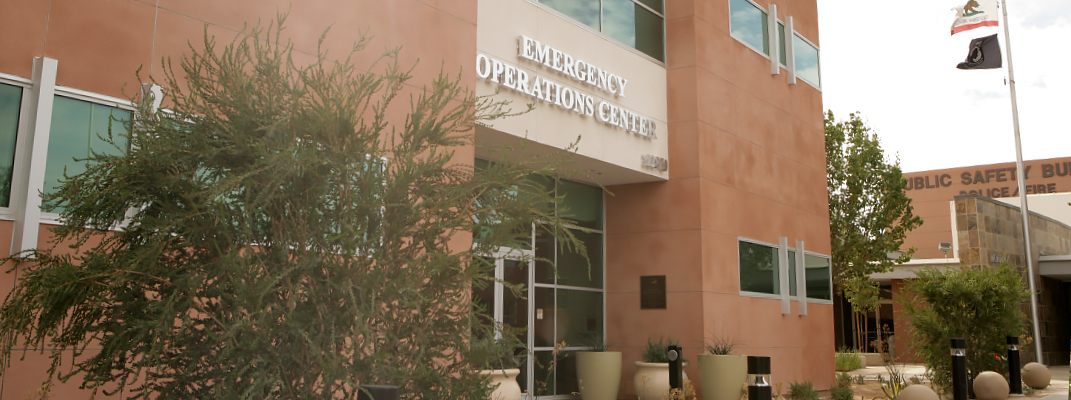Emergency Operations Center

The City of Moreno Valley Emergency Operations Center (EOC) is a centralized location for decision-making about local emergency response.
The EOC is where emergency response actions can be managed, resources and responses can be tracked and coordinated with the field operational area, and OES region.
City of Moreno Valley Emergency Operations Center (EOC) staff are organized around the five Standardized Emergency Management System (SEMS) functions. EOC staff are asked to refer to our Standardized Operating Procedures (SOP) manual for position descriptions and checklists.
Additional Info
- Organization Chart (Rev. 02/11)
- Preparedness Guides
More Information
Call: 951.413.3800
Email: oem@moval.org
EOC Operation
Upon activation of our EOC 24-hours a day, assigned staff work 12 hour shifts with two staff members trained to work each position. Several briefings with EOC staff are held each Operational Period. During each EOC briefing, staff coordinates information and sets priorities for mitigating the situation and returning the city to normal operations.
Communications and coordination occurs between the Incident Commander(s) and the EOC. Moreno Valley EOC staff will also communicate and coordinate with the Riverside County Operational Area EOC and other EOCs within Riverside County. EOC staff facilitates decisions for overall local government level emergency response activities with multi-agency or inter-agency coordination. If mutual aid is required, the City of Moreno Valley requests it through the Riverside County Operational Area EOC.
Standardized Emergency Management System (SEMS) functions
EOC’s within the State of California use the same five SEMS functions, which is helpful during a large-scale incident where mutual aid is requested. The five SEMS functions are:

Management Section
Responsible for overall emergency policy decisions such as proclaiming a Local Emergency, recommending a city ordinance and disseminating information to the public.

Operations Section
Responsible for coordinating all field operations in support of the emergency.

Planning/Intelligence Section
Responsible for collecting, evaluating, and disseminating information, developing an Action Plan every 12-hour period during activation, and documentation.

Logistics Section
Responsible for providing and maintaining facilities, services, personnel, equipment, and materials.

Finance Section
Responsible for financial activities such as tracking emergency hours, compensation and claims, and overall emergency costs.
